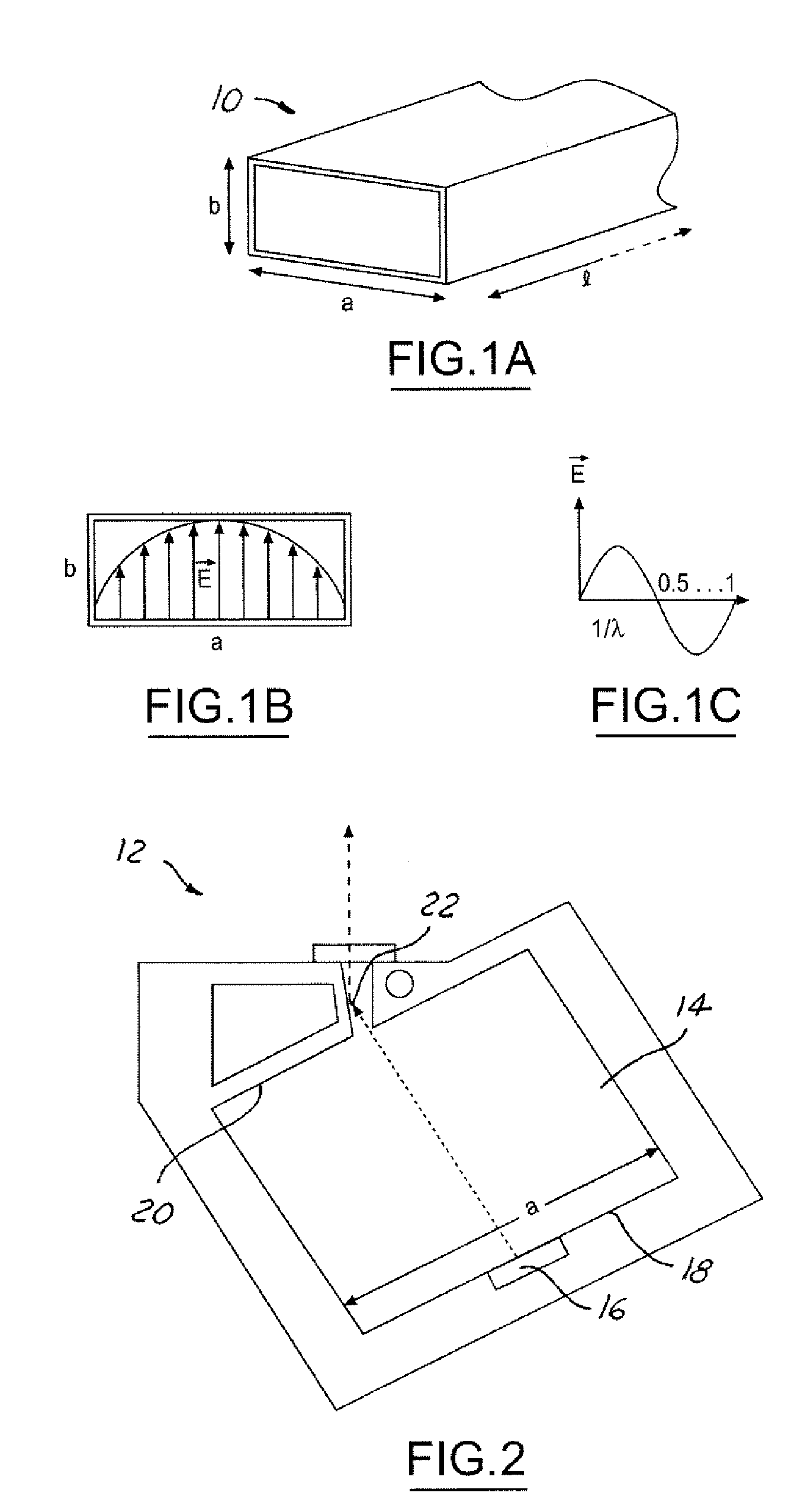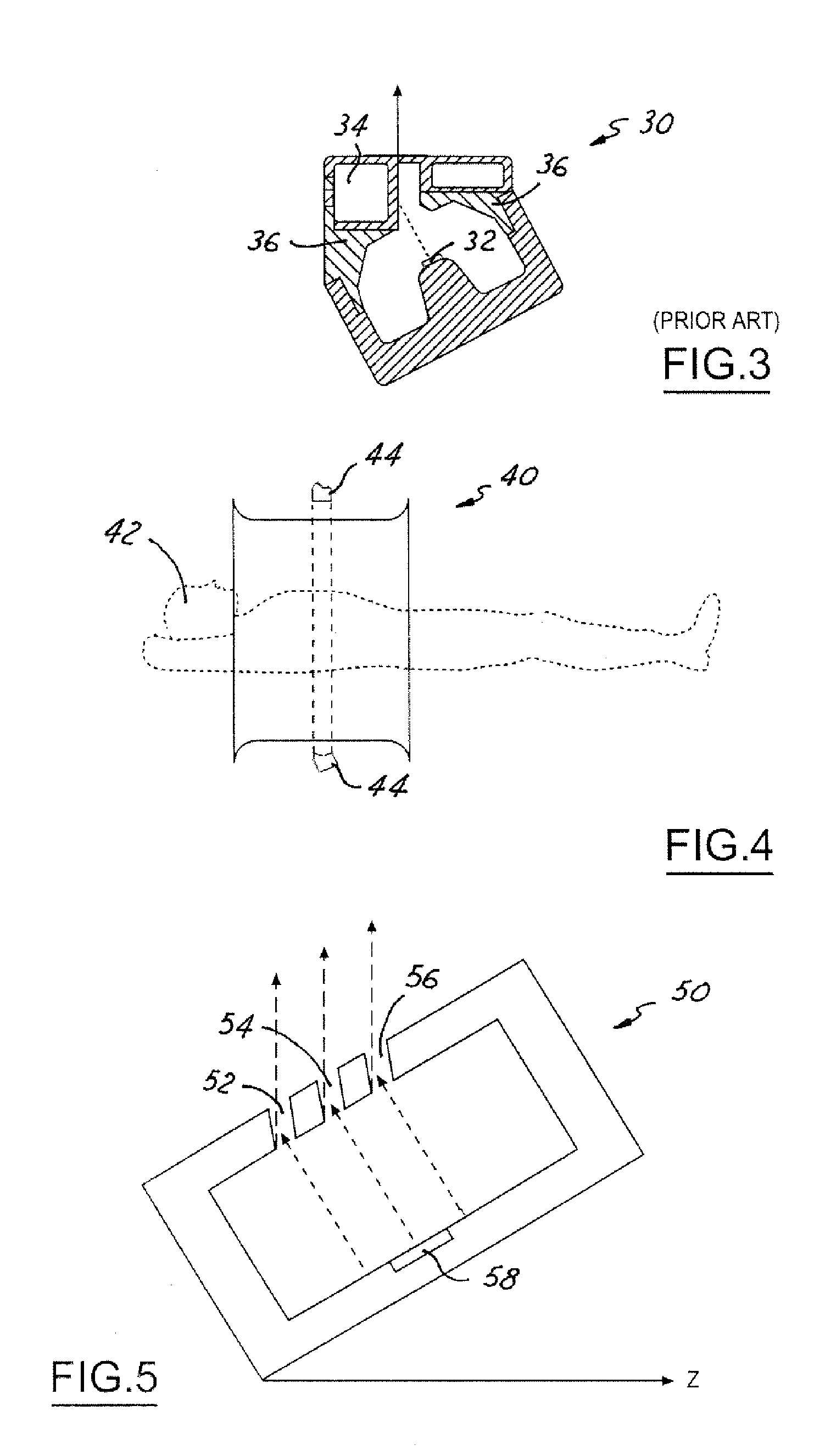RF accelerator for imaging applications
a technology of accelerators and electron beams, applied in the direction of material analysis using wave/particle radiation, instruments, nuclear engineering, etc., can solve the problems of limiting the operation of tubes, limiting the design aspects of x-ray apparatuses, and high voltage insulators being typically bulky and expensive, so as to improve reliability and reduce the cost of components
- Summary
- Abstract
- Description
- Claims
- Application Information
AI Technical Summary
Benefits of technology
Problems solved by technology
Method used
Image
Examples
Embodiment Construction
[0027] Referring to FIGS. 1A, 1B and 1C, there is shown an example of the electric field distribution for the TE10-mode in a rectangular waveguide. The waveguide cavity 10 has a width dimension, a; a height dimension, b; and a length, l as shown in FIG. 1A. FIG. 1B shows the electric field distribution E at a particular moment in time, in the cavity 10 for TE10-mode of the electromagnetic wave, E shown in FIG. 1C.
[0028] Referring now to FIG. 2, the accelerator is shown in cross section as a CT arc source 12 application. A rectangular wave-guide cavity 14 has an electron emitter 16 placed on the bottom face 18, which corresponds to the width dimension, a, of the rectangular waveguide. For an electric field distribution as shown in FIG. 1B, the electrons emitted from the source are accelerated across the guide, along the path corresponding to the height dimension, b, to the opposing, or upper face, 20 of the cavity 14. During the negative half wave of the electric field, as in FIG. 1...
PUM
 Login to View More
Login to View More Abstract
Description
Claims
Application Information
 Login to View More
Login to View More - R&D
- Intellectual Property
- Life Sciences
- Materials
- Tech Scout
- Unparalleled Data Quality
- Higher Quality Content
- 60% Fewer Hallucinations
Browse by: Latest US Patents, China's latest patents, Technical Efficacy Thesaurus, Application Domain, Technology Topic, Popular Technical Reports.
© 2025 PatSnap. All rights reserved.Legal|Privacy policy|Modern Slavery Act Transparency Statement|Sitemap|About US| Contact US: help@patsnap.com



